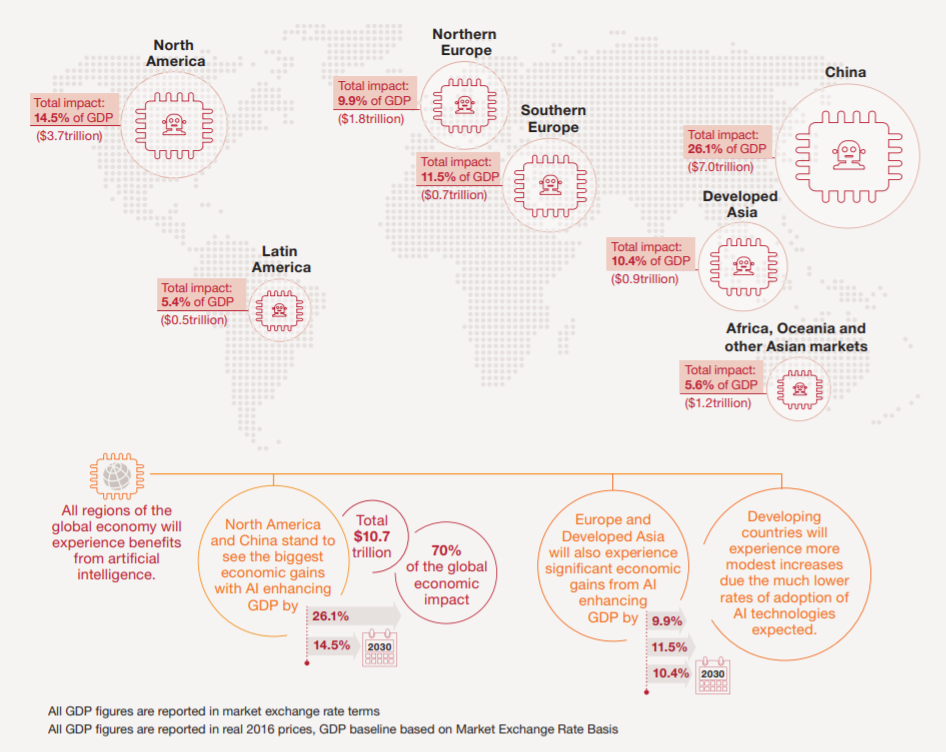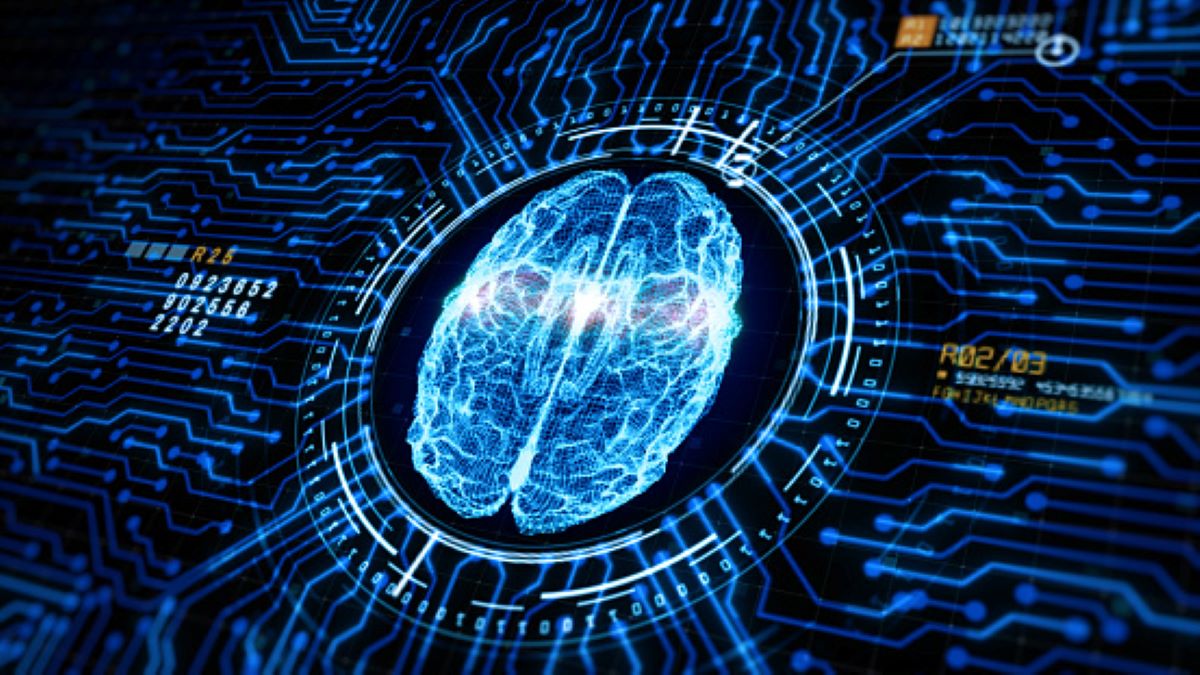Artificial intelligence (AI) is one of the most innovative technologies causing a major change in the structure of associated markets. The productivity and Gross Domestic Product (GDP) potential of the global economy can be transformed by AI.
Based on this fact, there is a need for strategic investment in different types of AI-based technology to make it a reality. Research has shown that 45% of total economic gains by the year 2030 will be from stimulating consumer demand, and product enhancements – all because AI will drive greater product variety, with increased attractiveness, personalization, and affordability over time. The report has shown that China (26% boost to GDP in 2030) and North America (14.5% boost) will get the greatest economic gains from AI, which is equivalent to a total of $10.7 trillion and accounting for almost 70% of the global economic impact.
What is AI in today’s context?
In a broad definition, AI is a group of computer systems having the ability to sense their environment, learn, think, and take action as a result of their objectives and what they are capable of sensing. There are different forms by which AI is used today, it includes; chatbots, digital assistants, machine learning, and deep learning amongst others. Various classifications of machine intelligence are;
1. Automated intelligence: The automation of manual/cognitive and routine/nonroutine tasks.
2. Assisted intelligence: Helping people to perform tasks faster and better.
3. Augmented intelligence: Helping people to make better decisions.
4. Autonomous intelligence: Automating decision-making processes without human intervention.
The transformational possibilities of AI are surprisingly impressive, as humans and machines are closely collaborating, coupled with the release of AI innovations into the mainstream from a research lab.
The impact of AI on different regions
Embracing AI into businesses will benefit all economies. However, some economies such as China and North America tend to benefit more from this technology than others – both in absolute and relative terms.

1. North America
The surge of GDP from AI will be enlarged by the huge opportunities to introduce more productive technologies in North America – many of which have been applied. Also, due to the advanced technology and consumer readiness for AI, along with the impact of the rapid accumulation of assets, the gains will be highly speeded up. North America is likely to see the fastest boost in the next few years, and the impact will still be strong from the middle of 2020s. However, it won’t be as high as in earlier years because as productivity in China begins to catch up with North America, there will be a stimulation of AI-enabled export products from China to North America.
2. China
Chinese GDP emanates from manufacturing which heightens the potential uplift from introducing more productive technologies. In the world of AI technology, it is likely to take some time to build up the technology and expertise needed to implement these AI capabilities, and therefore, the GDP boost won’t be as rapid as the US. However, around ten years, the productivity gains in China could begin to pull ahead. A crucial part of the value potential will be from the higher rate of capital re-investment within the Chinese economy compared to Europe and North America, as profits from Chinese businesses are fed into increasing AI capabilities and returns.
AI’s potential impact on different business sectors
AI will impact various business sectors, such as Healthcare, Retail, Financial Services, Manufacturing, Transportation & Logistics, Automotive, Technology, Communications & Entertainment, and Energy.
1. Healthcare
Three major areas by which AI will impact the healthcare system are as follows;
- Supporting diagnosis in areas such as detecting small variations from the baseline in patients’ health data or comparison with similar patients.
- Early identification of potential pandemics and tracking incidence of the disease to help prevent and contain its spread.
- Imaging diagnostics (radiology, pathology).
2. Retail
Three major areas by which AI will impact the retail industry are as follows;
- Personalized design and production.
- Anticipating customer demand e.g., retailers are beginning to use deep learning to predict customers’ orders in advance.
- Inventory and delivery management.
3. Financial Services
Three major areas by which AI will impact the financial industry are as follows;
- Personalized financial planning.
- Fraud detection and anti-money laundering.
- Process automation – not just back-office functions, but customer-facing operations as well.
4. Manufacturing
Three major areas by which AI will impact the manufacturing industry are as follows;
- Enhanced monitoring and auto-correction of manufacturing processes.
- Supply chain and production optimization.
- On-demand production.
5. Transportation and Logistics
Three major areas by which AI will impact the transportation and logistics system are as follows;
- Autonomous trucking and delivery.
- Traffic control and reduced congestion.
- Enhanced security
6. Automotive
Three major areas by which AI will impact the automotive industry are as follows;
- Autonomous fleets for ride sharing.
- Semi-autonomous features such as driver assist.
- Engine monitoring and predictive, autonomous maintenance.
7. Technology, Communications, and Entertainment
Three major areas by which AI will impact the technology, communications, and entertainment industry is as follows;
- Media archiving and search – bringing together diffuse content for a recommendation.
- Customized content creation (marketing, film, music, etc.).
- Personalized marketing and advertising
8. Energy
Three major areas by which AI will impact the energy system are as follows;
- Smart metering – real-time information on energy usage, helping to reduce bills.
- More efficient grid operation and storage.
- Predictive infrastructure maintenance.

